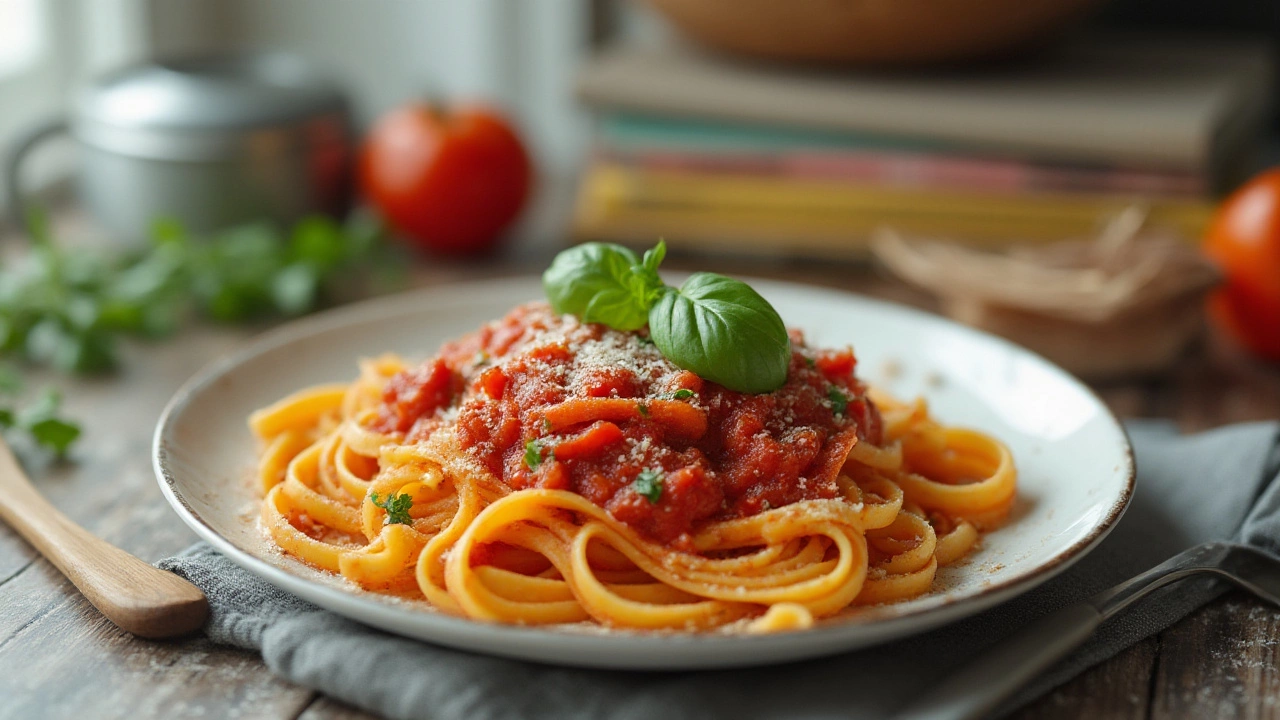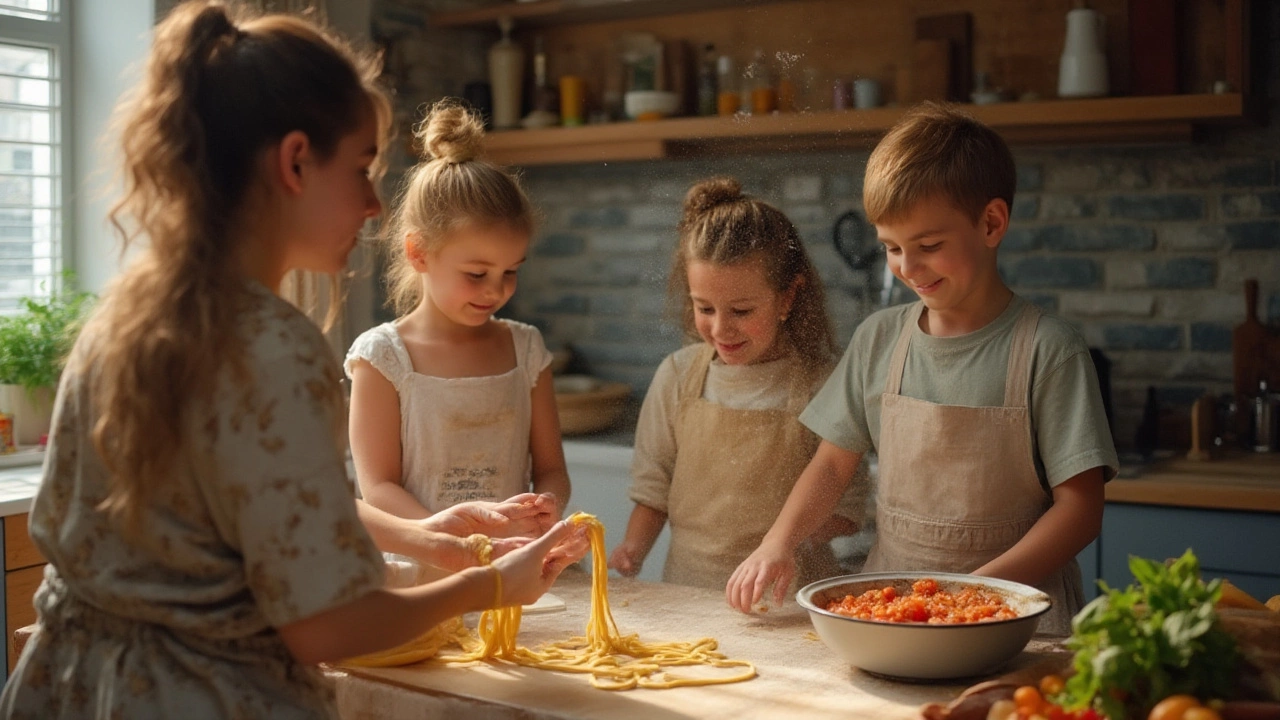Ask five Italians how to make good pasta, and you’ll get at least seven different answers, each ending with an eye-roll if you suggest using ketchup. What is it about a bowl of simple spaghetti that inspires such loyalty, even passion? The secret to good pasta goes way deeper than just tossing noodles in boiling water. It’s a dance between ingredients, timing, tradition, and a touch of rebellion against boring, soggy dinners. Ready to figure out why that pasta in Naples or Rome is so darn unforgettable? Spoiler: It’s not just the fancy olive oil or Nonna’s magic touch.
The Heart of Pasta: Choosing the Right Ingredients
Shopping for pasta might look simple, but this is where the magic starts—or fails. You’ve got shelves packed with brands, all yelling about how ‘authentic’ they are. Here’s the deal: the shape and the flour make a difference that even pasta newbies can taste. In Italy, real pasta is made from durum wheat semolina. That’s not just a tradition thing—it’s science. Durum’s high protein gives the pasta its famous bite, that al dente texture we spend ages chasing. Grab a pack and run your fingers along the edge. Is it a little rough? That means it’s bronze-cut. It’ll cling to sauce like a pro. If it’s all smooth and shiny, it’ll slip and slide, leaving your bolognese at the bottom of the bowl.
Egg pasta’s another level. The richer, silkier noodles—think tagliatelle, fettuccine—use fresh eggs. And the difference jumps out right away: golden yellow color and a luxurious feel. If you’re feeling confident, try making pasta from scratch at home. It’s way less intimidating than those old cookbooks make it seem: just flour, eggs, a pinch of salt, and a bit of patience. Some Italian grandmas use only a fork and a wooden board—seriously, no fancy gadgets needed. If you’re grabbing dried pasta, check the ingredients—semolina and water, full stop. Avoid boxes stuffed with fillers or mystery ingredients. You want pasta that tastes of wheat, not preservatives.
Let’s not ignore the water. Seems dull, but it’s the ghost in the machine. Pasta water needs to be super salty—like the Mediterranean. Not just for taste—salt toughens gluten, locking in structure so you get the right chew. One Italian saying goes, “‘L’acqua della pasta deve essere salata come il mare’”—the water should taste like the sea. Don’t be shy! And while you’re at it, don’t choose a tiny pan. Pasta needs room to dance. Cramming it up in a small pot? All you’ll get is clumpy, unevenly cooked noodles.
The Art of Cooking Pasta: Time, Technique, and Texture
You know that feeling when pasta is just the tiniest bit chewy, not raw but with a snap in the centre? That’s al dente, and it’s not up for negotiation. Italians aren’t messing about when they chase that perfect texture. Overcooked pasta is an instant heartbreak (there are stories of grandmas in Sicily who’ll throw the whole pot out if it goes mushy). Most British kitchens just dump the pasta in, set a timer, and walk off. Bad move. Fresh and dried pasta cook at wildly different speeds—fresh tagliatelle might be ready in two minutes flat, while dried penne could take up to twelve. Trust the tasting, not the clock. Keep stirring, test early, and grab a piece to see if it’s right before draining. A perfect pasta should feel alive: holding steady at the bite, but not fighting your jaw.
Another unsung hero: don’t rinse cooked pasta. It’s tempting, especially to stop it sticking, but rinsing washes away the magic. You want the surface starch, because that’s exactly what helps sauces bind. If your pasta is finished before your sauce is ready, just toss the drained pasta with a glug of olive oil, but don’t drown it. Or, just time your sauce prep to hit at the same moment: classic multitasking. And save a cup of that salty, starchy pasta water! Adding a splash to your sauce means glossy, restaurant-level results. It helps the sauce stick around, not slide straight to the bottom. Even big-name chefs like Massimo Bottura swear by this little step—he calls it his ‘secret weapon’ for everything from amatriciana to cacio e pepe.
How you drain your pasta matters. That frantic pour into the colander? It can bruise the noodles. If you’re making a proper Italian dish, lift pasta right into your sauce with tongs or a pasta fork. This lets you skip draining entirely—plus, the strands keep a bit of that pasta water clinging to them. Try this with spaghetti aglio e olio (garlic and oil)—no more pools of sauce left behind. In Napoli, waiters twirl spaghetti at tableside, keeping every last drop with the pasta. It looks fancy, but anyone can do it with a bit of practice!

Sauce, Seasoning, and The Genius of Simplicity
Here’s where the battle lines get drawn: should the sauce drown the pasta or just hug it? No Italian will ever tell you to flood your plate. Sauce is a partner, not the main act. That might be the simplest secret of good pasta: restraint. You don’t need twelve-hundred ingredients. A classic cacio e pepe, with just cheese, pepper, and pasta water, proves the point. Italy’s most beloved dishes—carbonara, amatriciana, puttanesca—keep it straightforward and let the pasta shine.
There’s one trick most home cooks never learn: finish the pasta in the sauce, not the other way round. Slide the nearly-ready noodles into a pan where your sauce is bubbling gently. Toss, stir, and add a spoonful of pasta water as needed. Those last few minutes let the pasta soak up the flavours, turning ordinary dinners into restaurant-worthy events. Try tossing fusilli with pesto, or penne with arrabbiata—every spiral and tube absorbs more taste than you’d expect. The play between firm noodles and a smooth sauce is the heart of it all.
Don’t shy away from tradition, but don’t be afraid to experiment. Grandma’s sauce is classic, but you can try different cheeses, vegetables, or olive oil brands for extra character. Even swapping pecorino for parmesan in carbonara gives a new note. And stop drowning pasta in grated cheese. A sprinkle goes far—watch any Roman chef and you’ll see a restrained, careful touch. And whatever you do, never break your spaghetti before boiling it. Italians frown on this—it wrecks the texture and ruins twirling. Try it once, and see how it changes the mouthfeel.
Pasta Culture: Little Traditions, Big Difference
Ask anyone who’s spent time in Italy: pasta is less a recipe, more a ritual. Sunday lunch in Rome is nothing without that steaming bowl of amatriciana, and Neapolitans have opinions about spaghetti pomodoro that’ll last for hours. Eating together is key—fancy table settings not required! In Manchester homes with Italian roots, lunchtime pasta on Sundays or at family gatherings is non-negotiable, and everyone claims their version is the real one. Listen for those stories, and you’ll pick up half a dozen tips not found in any cookbook.
Want to eat pasta like a local? Mind your pairings. There’s a wild science to which sauce matches which shape. Thin sauces love long noodles (think linguine and clams), chunky ragùs need hefty shapes (rigatoni with bolognese). Lasagne sheets were built for layer upon oozy layer, while ditalini go straight into soups like minestrone. Even small habits matter: Italians eat pasta with a fork, never a spoon (except maybe for toddlers!). And nobody ever adds oil to the boiling water, no matter what you’ve heard. It just sits on top and does nothing for sticking. Stir instead—simple, but it works.
Pasta is drama, comfort, and daily life mixed in a single bowl. Across the UK, home cooks are skipping jarred sauces and packet powders, going back to basics: good wheat, careful boiling, and the perfect dash of sea salt. Want restaurant results at home? Trust real ingredients, taste as you go, and remember, the best pasta dishes grew from a stubborn respect for what worked, not what was convenient. Keep it simple, trust the process, and you’ll nail the secret to good pasta every single time.

